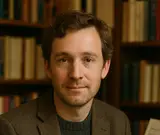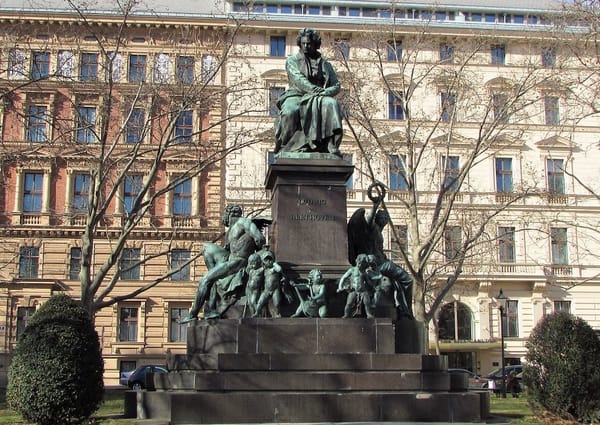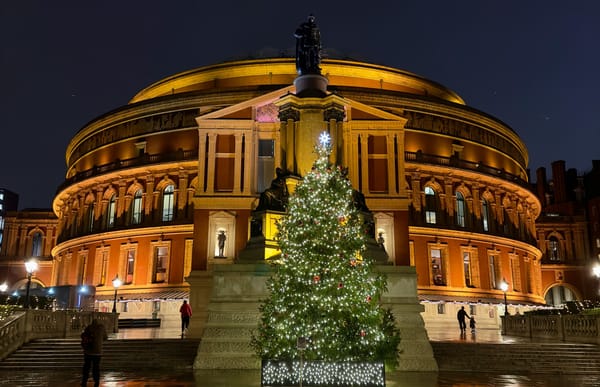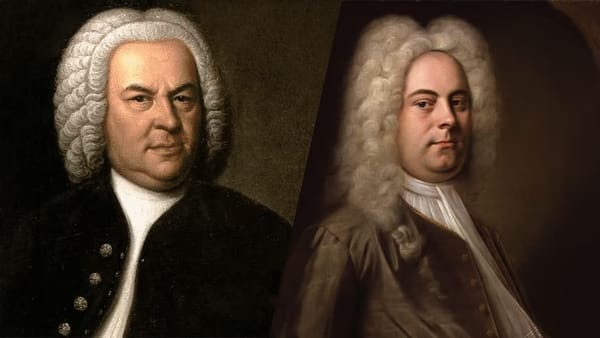The Innovators of Ballet Music: How Tchaikovsky and Stravinsky Reimagined Dance
Tchaikovsky gave ballet sweeping symphonic beauty, while Stravinsky shattered tradition with rhythm and dissonance. Together they redefined dance music, lifting it from courtly entertainment to radical modern art that continues to inspire choreographers and audiences.

When we think of ballet today, we tend to picture a sophisticated marriage of music and movement, a form in which score and choreography are woven so tightly that one cannot imagine them apart. Yet ballet music was not always so central to the art form. In the early days, dance was often treated as decorative entertainment: the orchestra kept time, but the music rarely rose above functional accompaniment. It took the vision of two composers—Pyotr Ilyich Tchaikovsky and Igor Stravinsky—to elevate ballet into a genre where music was not only essential but transformative.
Both men wrote at very different moments in Russian cultural history, yet they share a legacy of reshaping what ballet music could be. Tchaikovsky imbued the form with sweeping symphonic grandeur, while Stravinsky shattered conventions with rhythm, dissonance, and modernist daring. Their innovations changed ballet for ever, setting new standards for collaboration between choreographers, dancers, and composers, and leaving works that remain central to the repertory of companies across the globe.
Ballet Before Tchaikovsky
In the 18th and early 19th centuries, ballet was firmly attached to courtly ritual and theatrical spectacle. Composers such as Jean-Baptiste Lully in France and later Ludwig Minkus in Russia supplied scores that fulfilled their function but rarely claimed independent artistic value. Ballet music tended to be tuneful and light, written to fit a choreographer’s blueprint rather than to stand alone as a work of musical imagination.
This hierarchy placed the dance first, music second. Few concert-goers would have thought to hear a ballet score in isolation. While there were exceptions—Gluck, for example, hinted at dramatic depth—ballet remained, in essence, an entertainment rather than a musical art form. By the time Tchaikovsky began to write for the stage, ballet music was considered a minor branch of composition compared with symphonies, operas, and chamber works.
Tchaikovsky: Symphonist for the Stage
Tchaikovsky changed this perception almost single-handedly. Already renowned for his symphonies and concertos, he brought to ballet the same orchestral richness, harmonic depth, and emotional intensity that defined his “serious” works. His first ballet, Swan Lake (1877), was revolutionary precisely because it sounded like symphonic music. Audiences and even choreographers initially struggled with its complexity, but it marked a turning point: no longer was the ballet score background noise.
Swan Lake (1877)
The story of Odette, the enchanted swan-maiden, gave Tchaikovsky the chance to compose music of haunting lyricism and dramatic sweep. The famous oboe theme of the swan motif is instantly recognisable, while the Act II dances showcase his ability to blend characterisation with pure musical beauty. Although the premiere was not a success—largely due to inadequate choreography and performance—the score itself stood out as a masterpiece. Later revivals confirmed its greatness.
The Sleeping Beauty (1890)
With The Sleeping Beauty, Tchaikovsky perfected the integration of ballet and symphonic form. Each scene is carefully structured, the orchestration glitters with colour, and the score flows seamlessly across the fairy-tale narrative. The grandeur of the waltz in Act I remains one of the most beloved pieces of ballet music, while the overall scale of the work placed ballet on equal footing with opera in terms of ambition and prestige.
The Nutcracker (1892)
His final ballet, The Nutcracker, introduced an enchanting sound world filled with celesta, exotic dances, and a kaleidoscope of orchestral effects. Though it was initially received with some puzzlement, the score went on to achieve enduring popularity. The Nutcracker Suite, arranged for concert performance, became one of Tchaikovsky’s most celebrated works, ensuring that ballet music could thrive in the concert hall as much as on stage.
Through these works, Tchaikovsky redefined the very purpose of ballet music. He demonstrated that a score could bear the weight of symphonic thought while remaining danceable. His ability to balance dramatic narrative with choreographic needs created a model that influenced not only Russian composers but also the entire trajectory of ballet as an art form.
Stravinsky: The Modernist Revolutionary
If Tchaikovsky gave ballet its symphonic voice, Igor Stravinsky tore open its boundaries. Writing in the early 20th century, he entered the scene during a time of artistic ferment, when Diaghilev’s Ballets Russes sought to shock, challenge, and captivate Parisian audiences with daring new creations. Stravinsky became their most brilliant collaborator.
Where Tchaikovsky’s scores were lush and melodic, Stravinsky’s were jagged, percussive, and unpredictable. He treated rhythm as a driving force, harmony as a tool for surprise, and orchestration as a palette for startling new textures. Ballet music was no longer about elegance or symphonic sweep—it became a laboratory for modernism.
The Firebird (1910)
Stravinsky’s breakthrough came with The Firebird, based on Russian folk tales. The music glowed with exotic harmonies, shimmering orchestration, and rhythmic vitality. It retained enough Romantic colour to please audiences, while revealing Stravinsky’s emerging individuality. Diaghilev had found his new star composer.
Petrushka (1911)
With Petrushka, Stravinsky moved further into innovation. The score portrays the tragic tale of a puppet brought to life, blending folk melodies with bold harmonic clashes. The so-called “Petrushka chord”—a dissonant layering of two triads—is emblematic of Stravinsky’s daring. The music’s depiction of bustling Shrovetide Fair crowds and its ability to evoke psychology through sound astonished contemporaries.
The Rite of Spring (1913)
Then came The Rite of Spring. Its premiere is legendary: a near-riot erupted at the Théâtre des Champs-Élysées as audiences were confronted with pounding rhythms, jagged dissonances, and choreography by Vaslav Nijinsky that rejected classical grace for primitive ritual. The score’s opening bassoon solo, pitched in an unusually high register, signalled a new musical world. The violent polyrhythms of the “Dance of the Earth” remain some of the most visceral sounds ever created for ballet.
Although scandalous at the time, The Rite of Spring soon became recognised as one of the most influential works of the 20th century. It redefined the possibilities of rhythm, influenced composers from Bartók to Copland, and proved that ballet could be a platform for the most radical experiments in modern music.
Contrasting Legacies
Tchaikovsky and Stravinsky, though both Russian, represent almost opposite poles of ballet composition. Tchaikovsky romanticised the art form, turning it into a vehicle for symphonic storytelling. Stravinsky, by contrast, deconstructed it, using ballet to push musical boundaries into uncharted territory.
Yet their legacies are complementary. Tchaikovsky made ballet music respectable; Stravinsky made it revolutionary. Without Tchaikovsky’s elevation of the score to an art in itself, Stravinsky’s radical experiments might not have been taken seriously. Without Stravinsky’s audacity, ballet might have remained bound to late-Romantic traditions.
Both composers also highlight the importance of collaboration. Tchaikovsky worked with choreographers such as Marius Petipa, whose mastery of structure allowed music and dance to intertwine. Stravinsky’s partnerships with Diaghilev and choreographers like Nijinsky and later Balanchine demonstrated how composer and choreographer could jointly create something entirely new.
The Continuing Influence
Today, the works of Tchaikovsky and Stravinsky remain central to ballet companies worldwide. Productions of Swan Lake, The Sleeping Beauty, and The Nutcracker are perennial favourites, drawing audiences of all ages. Their scores have entered popular culture, from film soundtracks to seasonal traditions, yet they retain their original power on stage.
Stravinsky’s ballets, meanwhile, continue to challenge and inspire. The Rite of Spring is often performed in the concert hall, its raw energy thrilling even without dancers. Choreographers return to it repeatedly, finding new ways to embody its ritualistic power. Petrushka and The Firebird likewise invite reinterpretation, proving their enduring richness.
Beyond performance, the two composers shaped how later generations thought about ballet music. Prokofiev, Shostakovich, and Khachaturian built upon Tchaikovsky’s symphonic model, while modernists from Boulez to Adams felt Stravinsky’s rhythmic shockwaves. Contemporary choreographers, whether drawing upon tradition or experimenting with abstraction, remain in dialogue with these legacies.





